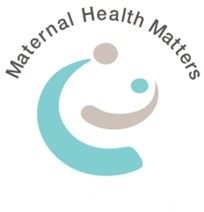International Day for Maternal Health and Rights

April 11 is the International Day for Maternal Health and Rights, when we celebrate every woman’s right to respectful, quality, safe, and comprehensive maternal health care, before, during and after pregnancy.
Ensuring this right as part of maternal health care practices is critical to improving both the experience and clinical outcomes.
In Australia, we face a challenge in achieving high quality, woman-centred maternity care, in a safe respectful environment.
- Firstly, in providing maternity services that honour the childbearing woman’s human right to respect, autonomy, dignity and the attainment of the highest level of health.
- Secondly, achieving maternity care that does no harm. The World Health Organisation states – In normal birth there should be a valid reason to interfere with the natural process; 85% of births do not require interventions. As caesarean section rates rise towards 10% across a population, the number of maternal and newborn deaths decreases. When the rate goes above 10%, there is no evidence that mortality rates improve, (WHO, 2015).
- Thirdly, in achieving effective, efficient and appropriate use of the funds available, while maximising the health outcomes for society. The current maternity care practices create a demand for health services that are not clinically indicated and reduce/limit access to clinical interventions for those who really need them.
To address the above concerns, Australia needs a rights-based maternity-care system. Where the rights of pregnant women, including their entitlement to care and support is based on their needs and preferences, and is enshrined in care standards and practices. To achieve the above Maternity Services need to be underpinned by a set of values that support the well-being of women and their children – The Respectful Maternity Care Charter.
Our recommendations to achieve respectful maternity care include:
- Protecting human rights. Ensure all women receive maternity care that protects their human rights. Enshrine in in health professional curricula, education on human rights, gender equity, respectful maternity care and working in partnership with pregnant women. Include assessing implementation of Respectful Maternity Care in health service accreditation linked to the standard Partnering with Consumers.
- Embeding Respectful Maternity Care in Policy. Use Woman-centred care; Strategic directions for Australian maternity services to assist in policy development, monitoring and reporting on issues relating to the human rights of women receiving maternity care.
- Enhancing Governance and Accountability. The maternity system needs strong governance. Ineffective governance and weak regulation of maternity services must end to achieve respectful, quality maternity care. Data holds the key to reform and good governance. Aggregated trended data can be deceptive and therefore not useful, therefore as an initial focus, report all data by parity. When reporting data, report by clinician outcomes, place of birth outcomes, both public and private maternity services, as well as reporting Women Reported Experience Measure and Women Reported Outcome Measures.
- Evidenced Informed Care – Midwifery led continuity of care. With the overwhelming evidence that midwifery continuity of care by a known midwife results in optimal outcomes for a woman and baby, and results in outstanding clinical, financial and consumer satisfaction outcomes that benefit families and the community, there needs to be a target of 50% of women of women receiving this care by 2025 and 100% of women receiving this care by 2030.
- Addressing the needs of disadvantaged and vulnerable women. There is currently an unequal distribution of maternal health care resources among population groups; with those who are financially, ethnically and geographically marginalised experiencing the greatest disadvantages. First Nations women benefit from ‘Birthing in our Country’ Indigenous-led birthing programs, while those from CALD backgrounds benefit from culturally appropriate care.
- Providing reliable information on maternity care options. Make available information about birthing options and the outcomes of each choice. Consumers report that they frequently had little knowledge about care options such as publicly funded midwifery-led care, due to the restrictive trade practices of some medical practitioners.
- Consumer voice. Finally, and most importantly, a maternity service should be run in the interests of the public. Unfortunately, any worthwhile reforms of our health sector to benefit the public are usually vetoed by lobby groups and unions with their special interests and/or managing their personal risk. To mitigate this impact, when in government, please instruct the health minister to meet with consumers before they meet with clinicians, unions, lobby groups and health services. This will ensure the Minister is briefed by and hopefully influenced by those impacted by health services
